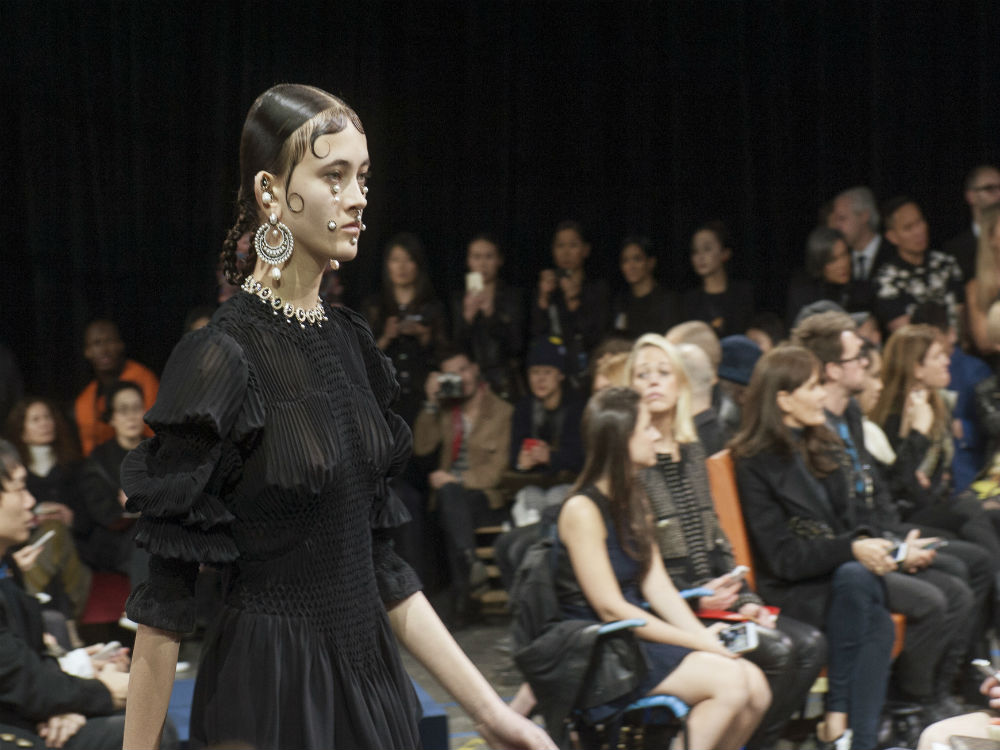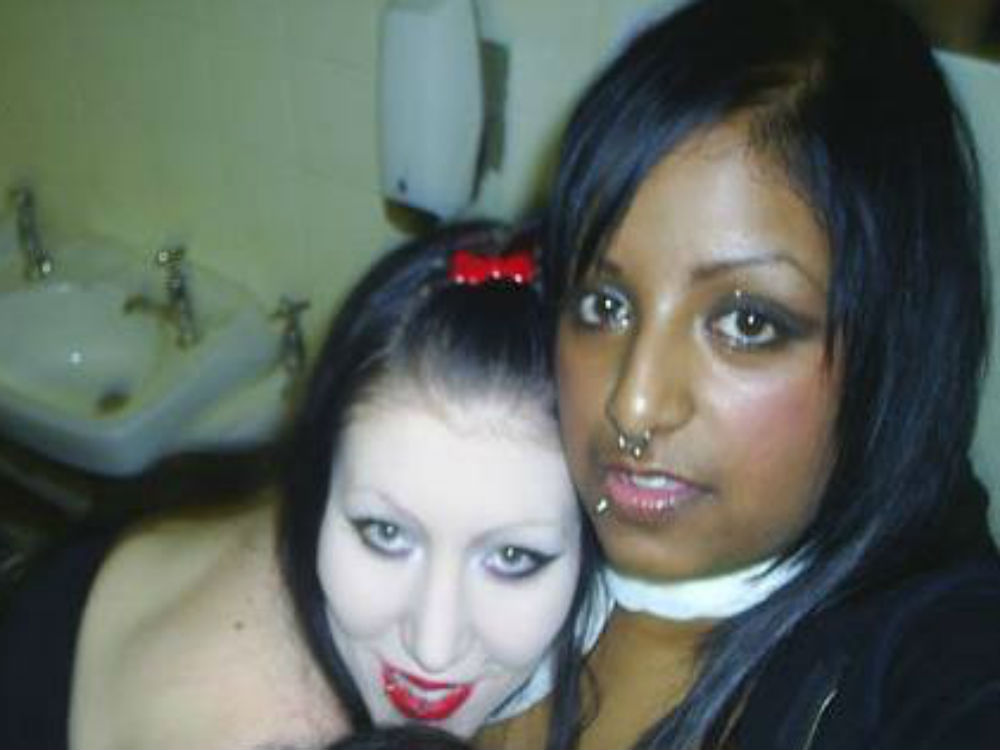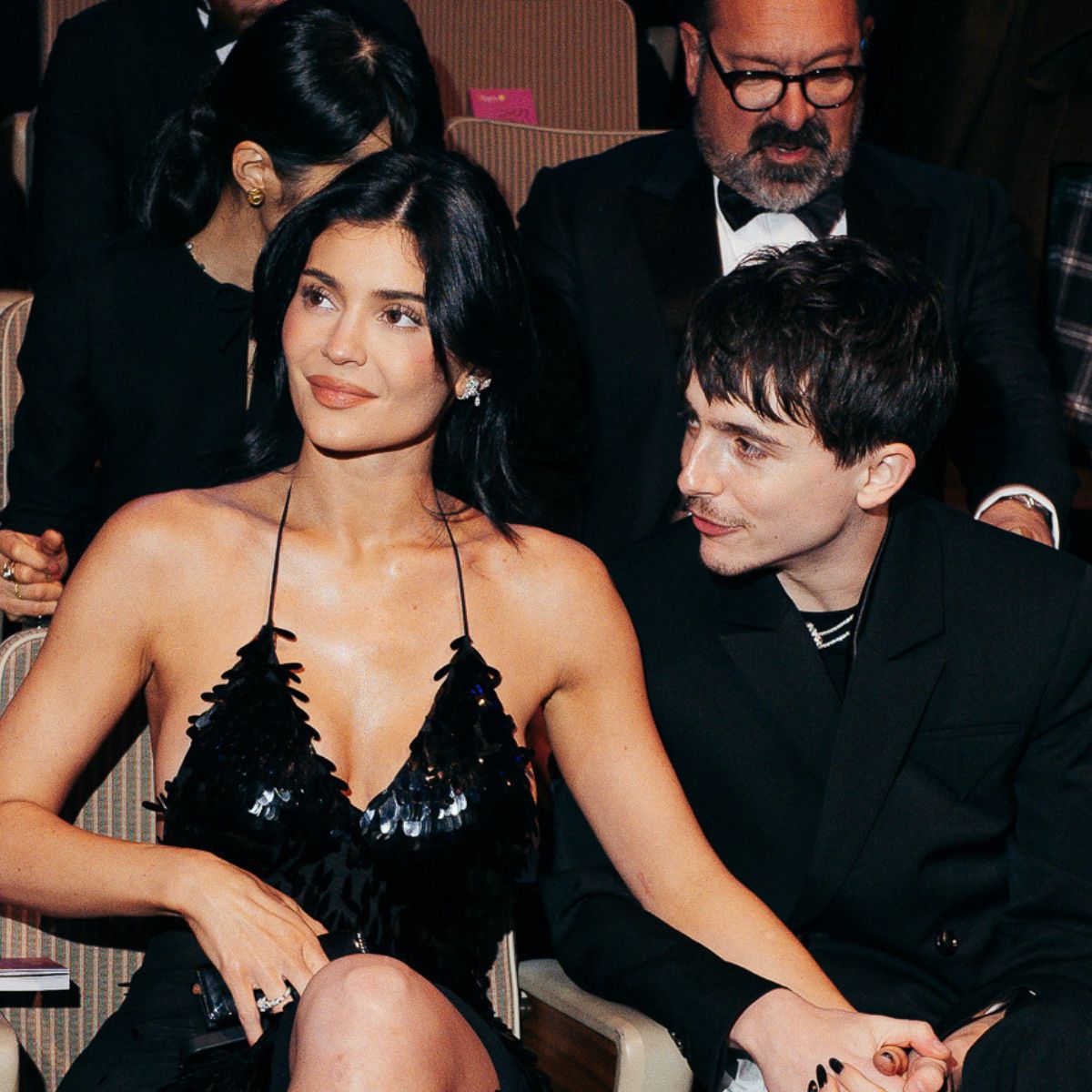Septum piercings are the ultimate in cool-girl chic...
But now I feel really old.

But now I feel really old.
I was 16 when I had my first piercing. It was a bejeweled belly-button bar, and for the most part, nobody ever saw it – which was, well, boring and pointless. As I hit university (and fuelled by a love of heavy metal, baggy jeans and all things macabre) I became something of a human pincushion, getting my lip done (in three places) and nostril pierced and stretching my ear lobes (the left one is still slightly cat bum-ish.) My final addition? A septum ring – one of the most painful piercings of them all. Imagine tweezing a nostril hair, and then multiply that misery by a million and you’re there.
You have to really want it. Despite my parents’ vocal distaste for it, allied to the insults from random passers by (‘Oi, you’ve got something on your face, Goth!”), I adored it. There was no deep-seated motive behind my actions; I just loved the look of something so traditionally masculine and rebellious on a feminine face. The biggest bonus? It made me feel a total badass.
After university, I started interning on serious magazines where wearing Chanel and a permanent grimace to work were de rigueur. It’s safe to say that nobody had any discernible piercings or looked even remotely alternative. It dawned on me that the piercings (and blue hair) had to go if I wanted to get anywhere with this journalism lark, sadly. (These were in the days before Vice, FYI.)

Anita (and BFF) with a bevy of metal in her face.There's more,you just can't see it. LOLS.
Yet expressing yourself on the outside is merely an expression of creativity and self-awareness. Psychologist Elaine Slater explains, “Tattoos and piercings are a statement of self. Everything we do expresses self, from the social groups we pick through to the career, hobbies and music we like. It says who we are in the world, and to the world.” That’s not just a western concept – piercings have been used since the dawn of time in various Indian and Native American tribes, although the reasons for having them can differ. In fact, rather than a rebellion a septum piercing in Bengal, is the sign of being a married woman, and also denotes status and class. Slater continues: “There are thousands of global cultures where piercings are part of heritage and a traditional right of passage. They represent that you belong to a group that has the same mind set.”
It’s been nearly a decade since people hurled abuse at my piercings in the street, and things have definitely changed. Now, walking around my fashion-savvy office building, I’ve seen several septum piercings and sleeve tattoos. A decade ago many would have considered these people virtually unemployable in an office environment, and completely stereotyped them. Is the tide turning of how we view adornment? Fashion-wise it undeniably is. Over the last few seasons at Givenchy, Rodarte and Vivienne Westwood, there have been nods to a new pierced aesthetic being supremely avant-garde, with the look playing a prominent role at the shows.
Marie Claire Newsletter
Celebrity news, beauty, fashion advice, and fascinating features, delivered straight to your inbox!
But it always takes a celebrity to bring this kind of cultural change – and the likes of Lady Gaga, Rihanna, FKA Twigs, Scarlet Johansson and even the usually vanilla Jessica Biel have been seen sporting septum piercings – whether real or fake. Body piercer Jackie Joiner has worked in the industry since the 90’s, and thinks celebrities have been key to normalizing piercing. ‘When Rihanna wore a fake septum ring – called a clicker - on the cover of W magazine last year we saw a huge increase in sales of them, and septum piercings rose too. The new generation always want something different from the last. Brows and lips aren’t boundary-pushing enough, that’s why there is a huge increase in septum piercings in particular. It’s the new rebellion.”

Grown up goth. Ten years later, same gormless expression.
But how mainstream are they really? For two weeks I’ve been wearing a dainty gold clip on ring on my septum. I’ve told everyone – including my closest buddies – that’s I’ve had it re-pierced. They’re all big fans, but outside of my friendship group I’m lot sure people are so keen. On the tube to work women, in particular shoot me quizzical glances. Firstly, they stare directly at it. Then their gaze moves in search of other signifiers of my lifestyle; namely my hands, then my bag and finally, my shoes. The confusion is evident – how can she have a great manicure and major accessories with that? Quite easily, as it turns out. Quite easily.
But the biggest surprise was yet to come. Men have been very vocal about my new (old) look. I posted a picture on Facebook, and several male friends said it looked ‘hot’. I wore it to the pub and one particularly smoking blonde gent said he thought it was beautiful.Trust me, this was absolutely not the case ten years ago, when a septum piercing was very much ‘extreme’ and rendered you unavailable to anyone except ‘moshers’ like yourself.
My final challenge was at work. My colleagues loved it, but when it came to meetings, or anything deemed ‘serious’ I became acutely aware of its existence. In fact, during a features meeting I felt myself being far more vocal than usual, and realized afterwards I was overcompensating for the piercing. Whilst that’s not a bad thing it did make me question whether I’d have gotten my job if I’d worn it to my interview. I ask my editor, who said, ‘Your CV spoke for itself so if you’d been wearing that septum piercing I would have noticed it, but it wouldn’t have bothered me. Aesthetic norms change so quickly, and piercings have become so fashionable that in creative industries they’re not an issue. But first impressions count – and not all industries are as accepting as ours.’
The Advisory, Conciliation and Arbitration Service (or ACAS) says that: ‘Employers may wish to promote a certain image through their workers, which they believe reflects the ethos of their organisations. Sometimes this can mean they ask workers to remove piercings or cover tattoos while at work.’
But I’d argue that’s still discrimination, because the way we look has no bearing on my ability to work effectively. When it boils down to it, it’s just a bit of metal through your skin, which should, in theory, be as accepted in a lawyer’s or doctor’s office as it is in my line of work. That change isn’t here just yet, but it’s far more likely than a decade ago. As for me, I’m sort of hoping my septum piercing might get me a hot open-minded date. I’ll keep you posted though – it’s a piercing, not a miracle worker.
-
 Style Briefing: Matthieu Blazy's last hurrah
Style Briefing: Matthieu Blazy's last hurrahHow the designer delivered a fresh perspective while also honouring its history of craft and creativity
By Rebecca Jane Hill
-
 The Emily in Paris cast has spoken out as one of its stars officially quits the show
The Emily in Paris cast has spoken out as one of its stars officially quits the showBy Jenny Proudfoot
-
 Timothée Chalamet’s mother has opened up about his relationship with Kylie Jenner
Timothée Chalamet’s mother has opened up about his relationship with Kylie JennerBy Jenny Proudfoot